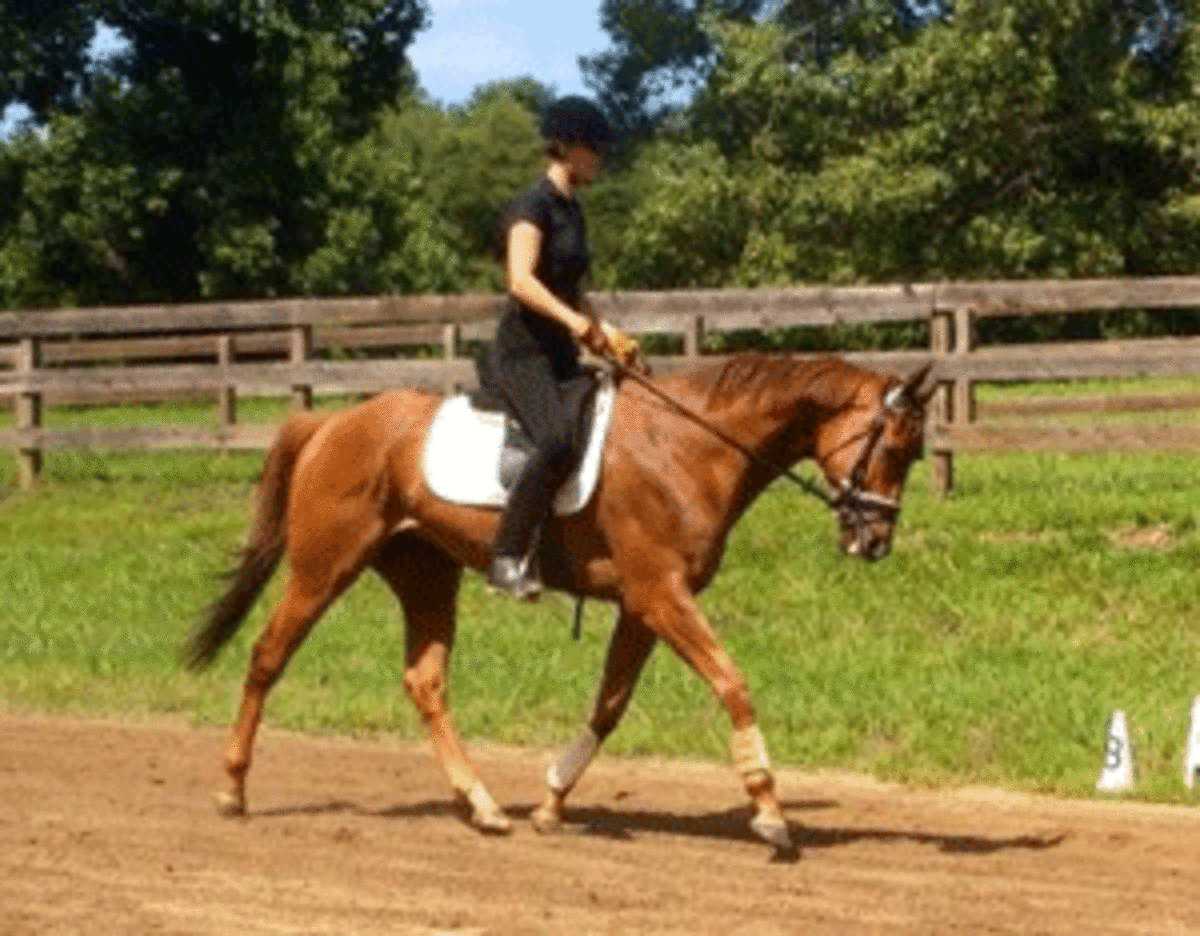You know I’m feeling a lot more secure on a just backed or re-started youngster, when I swap my nimble (“Gotta bail!”) jodhpur boots for my clunky Koenigs. So it is a good feeling, emotionally and physically, to mount up on my boy these days with cautious confidence and begin our work out.

I really couldn’t be happier with Forrest. Besides being an affectionate and respectful dreamboat on the ground (oh, alright, sometimes he tips over the water bucket and will raise a front leg in the cross ties to paw when my back is turned), he has been super reliable undersaddle, despite his kangaroo antics on the longe line. As a matter of fact, after this, our 7th ride together, he was so loose and relaxed after our trot set that I felt that I could go ahead and hack out of the arena into the field. I didn’t, but I felt I could.
I don’t want anyone reading this to get the idea that I step into the stirrup iron, pick up the reins, and my horse goes immediately, beautifully, onto the aids, and, from his first step, looks ready for a First Level class this weekend. For safety concerns, I do begin our walk work, essentially traveling around the perimeter of the arena, with changes of rein and the occasional, 20-meter circle, on a steady contact, in case a deer or a stray pitbull (this is South Carolina, folks) comes bolting out of the woods. “So many Americans get hurt on their horses because they do not ride the horse on the aids!” a European trainer commented, a couple of years ago, at a local clinic. This made a lot of sense to me, and, I guess, to him, as he was flung from one of his youngsters, months later, and broke his hip.
But when I go to pick up the trot, as mentioned a couple of blogs ago, all I do is follow the Training Scale to the best of my ability: I ride my horse forward, focusing on his rhythm and tempo and, with that, comes the natural suppleness and swing. Adding straightness to the recipe, I begin to pilot Forrest’s shoulders to remain straight on a curved line, and I do this by pulsing my inside calf into the outside rein, held softly against his neck, and committing my body to a correct position, for every, single, step. Riding curved lines to create the very beginnings of lateral bend, we are now pretty consistently rewarded with longitudinal flexion and his willingness to stretch and swing tells me the work is correct.

Now, speaking of position, international competitor, coach and author, Jane Savoie, another gracious member of Team Forrest, has begun watching short video clips of our work as I count on her feedback to kick my butt and make whatever adjustments are necessary to correctly train my horse. Jane pointed out, rightly so, that I’ve got to focus on staying centered on my horse. That damnable, left hip of mine will dip, and when you have a dropped hip, you might think that you’re sitting heavily over that particular hip, but in reality, you end up floating off to the other side of the saddle, overburdening the opposite side of your horse. I’ve worked on this hip my entire riding career–indeed every moment of every ride, and I have to tell you it just kills me that it is still an issue.

Determined to follow Jane’s good advice, I’m simply dropping more weight, now, into my left stirrup, in both directions, and making sure I advance my outside shoulder going right. I also use a super effective tip gleaned from auditing a Kyra Kyrklund clinic: point your inside knee where you want to go; it automatically obliges you to weight the correct seat bone. Jane was kind enough to praise my training attempts thus far, particularly Forrest’s relaxed way of going, and even typed with enthusiasm, “I’m so proud of you!” Naturally, that gave me “that winning feeling!” But more importantly, I want Forrest to feel like a winner, and you know what? I kind of think he does!












